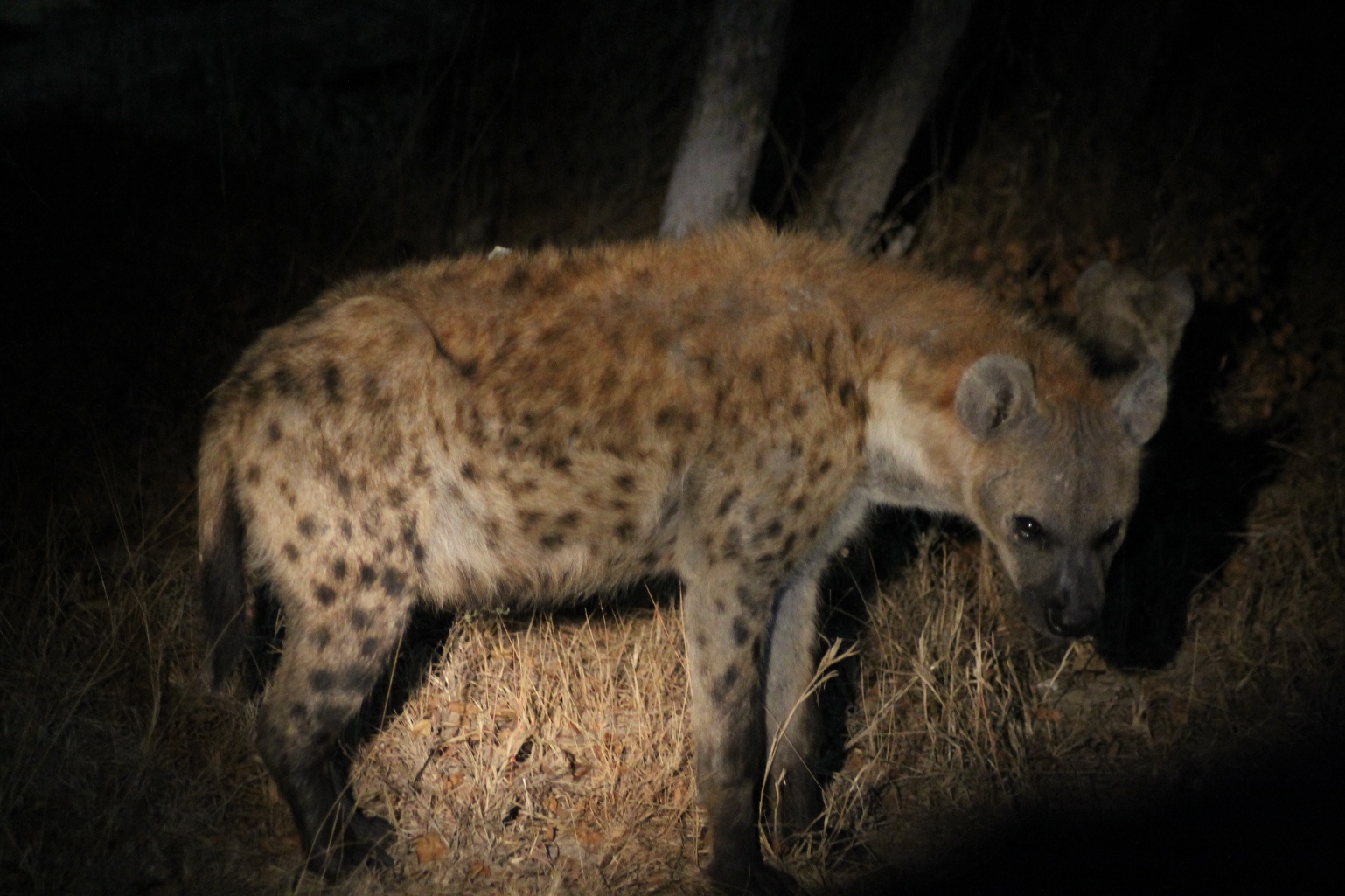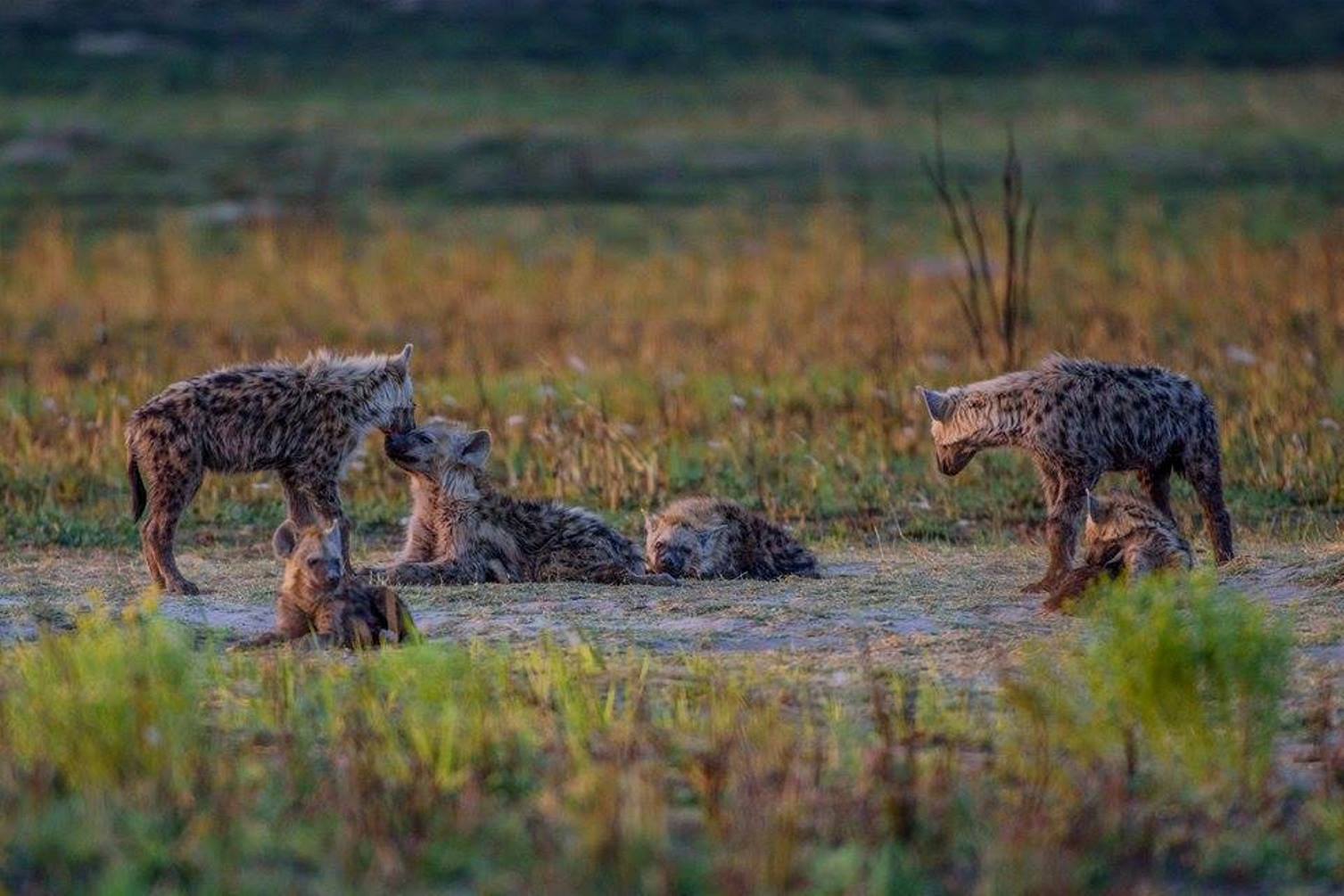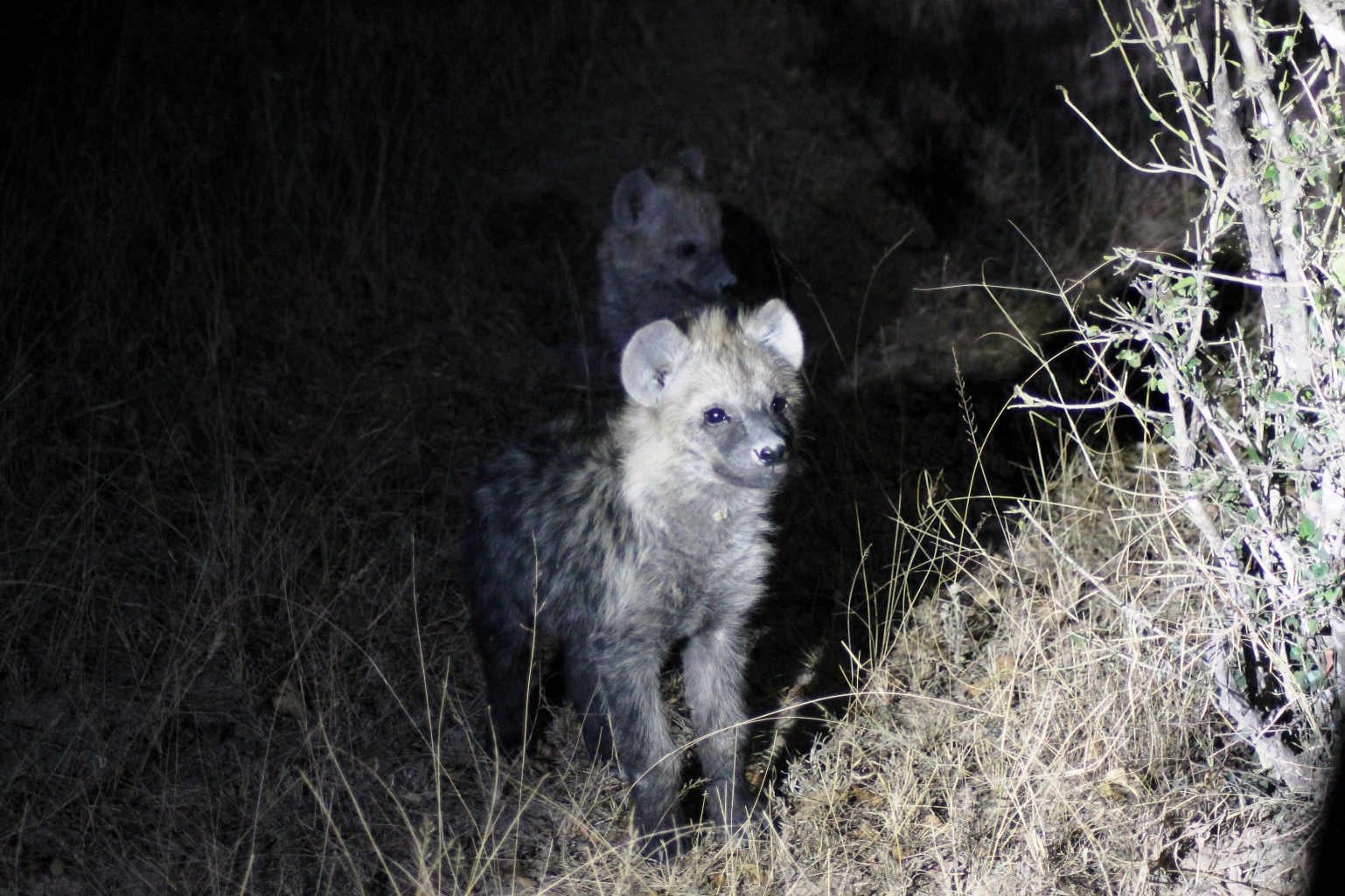Often maligned and misunderstood, the spotted hyena is one of Africa's most impressive and adaptable predators.
Illustration by Kallum Best
This piece is published in partnership with the African Lion and Environmental Research Trust, a non-governmental organisation that promotes the study and conservation of African wildlife.
During the night in the African bush, hunters are king. While most people imagine prides of lions roaming grass plains in search of zebra and wildebeest, or a leopard slinking its way along a river bank, spotted hyena are one of the most formidable predators in Africa.
Many misconceptions surround this highly complex species, perhaps because so little is known about their behaviour and ecology. One of the biggest misconceptions is that they are predominately scavengers. Spotted hyena are, in fact, successful ambush and endurance hunters, with a top speed of 60 km/h; they can maintain a speed of 40-50 km/h for several kilometres or 10 km/h over large distances. Their sloped backs and unusual walking pattern – the front and back limbs on each side of their body move in unison – help them travel great distances.
Hyena live in clans, with an established hierarchy where an adult female is dominant. Exactly how much of their diet consists of self-made kills or carrion depends on prey availability and distribution. Sole hunters can bring down a wildebeest, while cooperative hunting allows clans to bring down larger game species, including zebra and giraffe. With the most powerful jaws of any carnivore in Africa, spotted hyena can crack open skulls and bones, allowing them to consume the protein-rich contents.
The Disney movie The Lion King suggests that hyena and lions sometimes cooperate with each other; in reality, they are mortal enemies. As both species are social apex predators that have large territories and hunt large-bodied prey, competition between lions and hyena is fierce. Both are intolerant of the other species’ young, and adult male lions can kill adult hyena. Competition over food brings the two species into conflict: Small groups of at least three hyena can chase a lone lioness off a kill, while an adult male lion can chase clans of up to 10 hyena off a kill.




The African Lion and Environmental Research Trust (ALERT), a non-governmental organisation with which I am involved, studies two clans of spotted hyena in Zambezi National Park, Zimbabwe. The research team, led by principal researcher Bob Mandinyenya, has fitted one hyena in each of the clans with dual tracking collars (satellite and radio). This allows them to follow the clans’ movements and establish habitat preferences, clan sizes, and food sources and preferences. This research complements a long-term occupancy survey that has been conducted on large predators within the 56,000 ha national park.
“Most of the challenges we encounter are because of the elusive nature of the species,” says Mandinyenya. “They are mostly active during the night and it is very difficult for us to be tracking them on the ground at this time of the day. The limited financial resources that we have limit us to only the two satellite collars and camera traps that we have, which presents a huge challenge in collecting more information about these spotted hyena.”
In an ever-changing world, a species’ ability to adapt is critical to its survival, and the spotted hyena can certainly capitalise on new opportunities. This often brings them into conflict with humans; however, the impacts of human activity are not well known. Although listed as Least Concern by International Union for Conservation of Nature, the hyena’s biggest threat to survival is habitat loss and fragmentation. As Zambezi National Park is surrounded by human communities, the team’s research focusses on how human factors affect hyena ecology and behaviour.
Collaring a sedated spotted hyena to track its future movements. © Bob Mandinyenya
Information on the clans’ movement patterns, space utilisation and food sources will assist in predicting the locations and causes of human-hyena conflict. “For instance, we currently hypothesise that the improper management of edible waste by humans is affecting the human range, activity patterns and carrying capacity for spotted hyena in the park,” says Mandinyenya.
Understanding the ecology and behaviour of spotted hyena will help mitigate conflict between hyena and humans, and provide management guidelines for conservation practitioners, researchers and reserve managers.
As Africa is home to many large carnivores, it is also important to establish the relationships between hyena and other predators such as lions, leopards, African wild dogs and cheetahs, as such information will be vital to the conservation of all species. In particular, the data from this hyena study will assist ALERT’s ongoing ex situ conservation program for African lions.
The organisation’s research focusses on conserving these large carnivores and working with local communities to mitigate conflict and educate. Many conservation programs within Africa are working to ensure these species are in the wild for generations to come, as these animals are vital components of what make Africa so unique.
Emma Dunston is a researcher for the African Lion and Environmental Research Trust. Edited by Andrew Katsis and Sara Paradowski.
































































